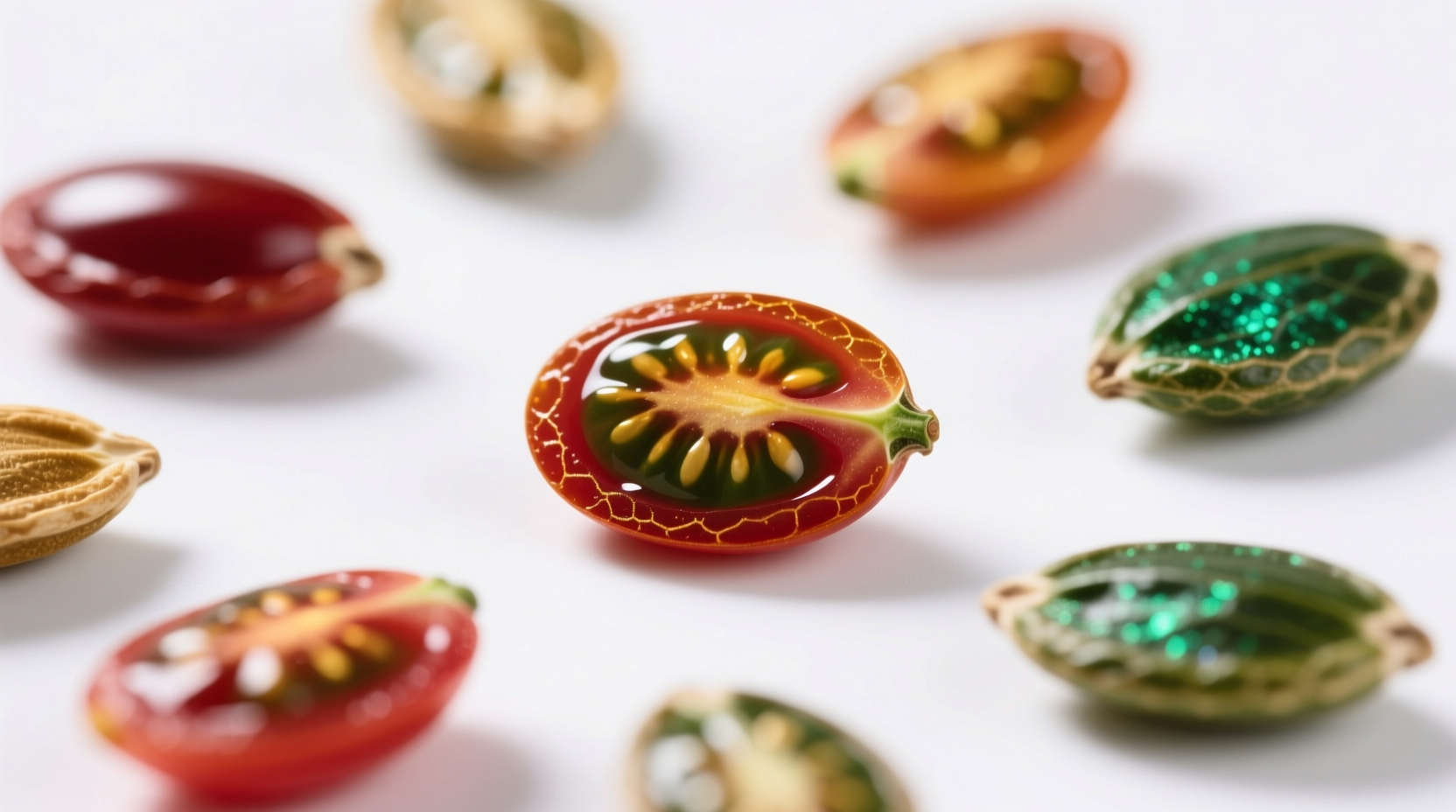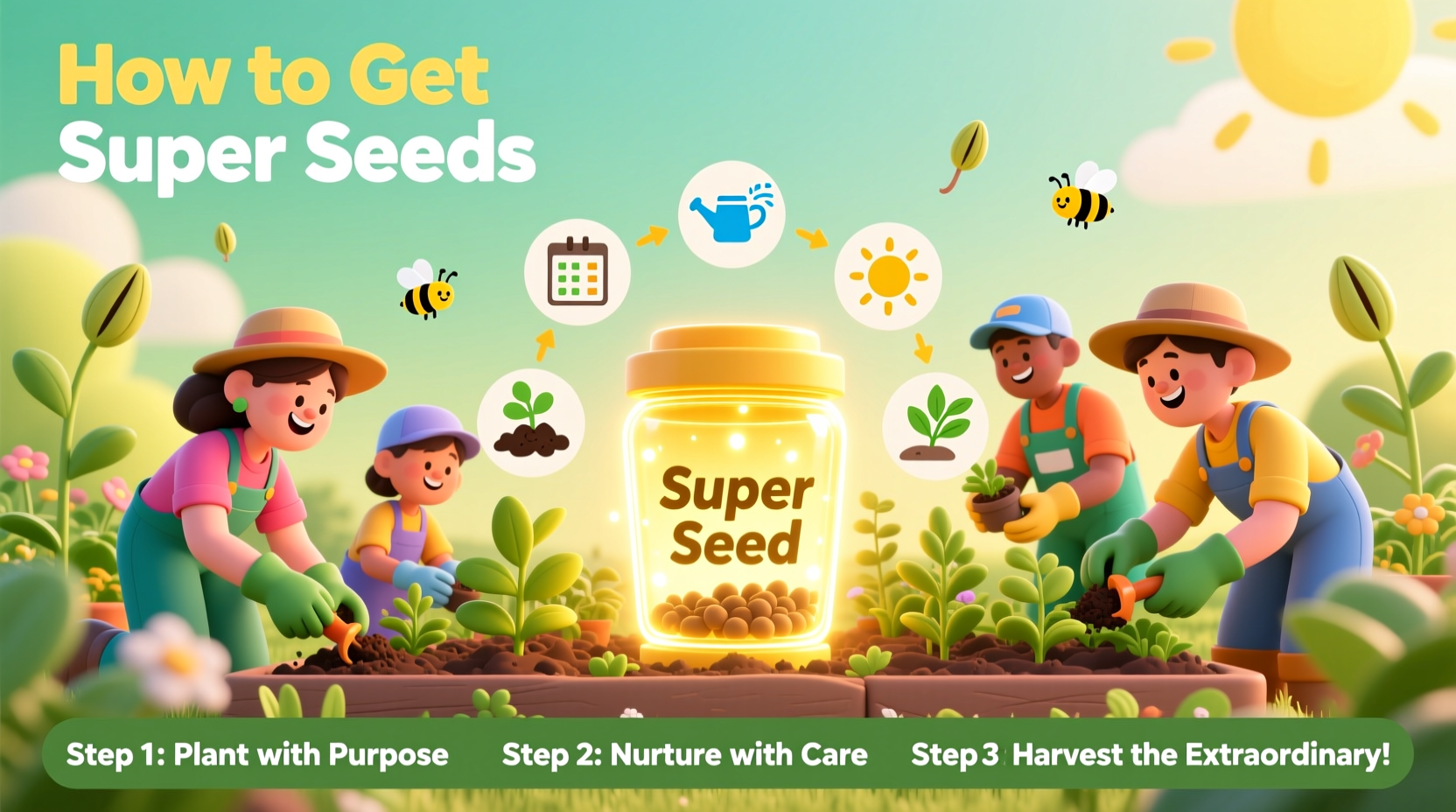Imagine harvesting tomatoes twice the size of your neighbors' with deeper flavor, or growing lettuce that thrives through summer heat without bolting. The secret starts long before planting season—with your seeds. High-performing "super seeds" aren't magic, but the result of careful selection, proper sourcing, and strategic gardening practices that anyone can implement.
What Makes a Seed Truly "Super"
Before diving into acquisition methods, understand that "super seeds" aren't a formal gardening term but describe seeds with exceptional qualities. These include:
- High germination rates (80%+ for most vegetables)
- Genetic diversity for disease resistance
- Adaptation to your specific climate
- Vigor producing faster-growing, stronger seedlings
- Purity without cross-pollination contamination
Unlike standard commercial seeds that prioritize shelf life and uniformity, super seeds focus on performance in your specific garden conditions. The USDA National Institute of Food and Agriculture confirms that locally adapted seeds often outperform generic varieties by 20-30% in yield and resilience (nifa.usda.gov).
Your Seed Sourcing Roadmap
Follow this practical sequence based on your gardening timeline:
Step 1: Identify Your Garden's Unique Needs (Before Ordering)
"Super" is relative to your specific conditions. A seed perfect for Florida's humidity might fail in Montana's dry climate. Before purchasing:
- Test your soil pH and composition
- Record your first/last frost dates
- Note microclimates in your garden space
- Research disease pressures in your region
The University of California Cooperative Extension provides free regional gardening guides that identify locally successful varieties (ucanr.edu).
Step 2: Source From Specialty Seed Companies (December-January)
Not all seed companies are equal. Focus on these vetted sources for genuinely superior seeds:
| Source Type | Best For | Quality Indicators | Top Providers |
|---|---|---|---|
| Regional specialty companies | Climate-adapted varieties | Tested germination rates published, local growing experience | High Mowing Organic Seeds (Northeast), Seed Savers Exchange (Midwest) |
| Heirloom-focused companies | Genetic diversity, flavor | Open-pollinated varieties, historical documentation | Baker Creek Heirloom Seeds, Southern Exposure Seed Exchange |
| Research-backed suppliers | Disease resistance, yield | University trial data, scientific breeding | Johnny's Selected Seeds, Fedco Seeds |
Avoid big-box store seeds for critical crops—they often have lower germination rates and less regional adaptation. Look for companies that publish actual germination test results (not just "meets federal standards") and provide growing data from multiple seasons.
Step 3: Join Seed Exchange Networks (February-March)
Community seed exchanges provide locally adapted seeds that have already proven successful in your area. These seeds carry "survivor bias"—only the strongest varieties get passed along year after year.
How to find exchanges:
- Check with your county extension office
- Join Seed Savers Exchange's online directory
- Attend local gardening club meetings in early spring
- Participate in National Heirloom Exposition events
When trading seeds, prioritize those with documented growing success in your hardiness zone. The Seed Savers Exchange reports that gardeners using locally exchanged seeds see 35% fewer crop failures compared to those using generic varieties.
Step 4: Master Strategic Seed Saving (Throughout Growing Season)
Creating your own super seeds requires understanding which plants work best for seed saving:
| Plant Type | Seed Saving Viability | Pro Tips |
|---|---|---|
| Beans, Peas, Tomatoes | Excellent (true-to-type) | Save from earliest-producing plants for vigor |
| Lettuce, Spinach | Good | Select plants that bolt latest in heat |
| Cucumbers, Squash | Fair (isolation needed) | Hand-pollinate to prevent cross-contamination |
| Hybrid varieties (F1) | Poor | Do not save—offspring lose desirable traits |
For maximum seed quality, select plants showing:
- Earliest flowering/fruiting
- Strongest disease resistance
- Best adaptation to your conditions
- Superior flavor and texture
Save seeds from at least 10-15 plants of the same variety to maintain genetic diversity. The Organic Seed Alliance recommends marking exceptional plants with colored tags early in the season to identify your best candidates for seed saving (seedalliance.org).
Step 5: Test and Store Seeds Properly (Post-Harvest)
Even premium seeds lose viability without proper storage. Follow this protocol:
- Test germination: Place 10 seeds between damp paper towels in a labeled bag. Count sprouts after 7-10 days. Discard batches below 70%.
- Dry thoroughly: Seeds need 8-10% moisture content. Air-dry 2-3 weeks in single layer away from direct sun.
- Store correctly: Use airtight containers with silica gel in refrigerator (40°F) or freezer (-4°F) for long-term storage.
Properly stored seeds maintain viability 2-3 times longer. The National Center for Genetic Resources Preservation confirms that seeds stored at 0°F with 20% humidity can remain viable for decades (ars.usda.gov).

Avoiding Common Seed Selection Mistakes
Even experienced gardeners fall into these traps when seeking superior seeds:
- Mistake: Prioritizing novelty over performance
Solution: Stick with proven varieties for 80% of your garden; allocate 20% to experimental seeds - Mistake: Ignoring regional adaptation
Solution: Check if the seed company grows trial gardens in your hardiness zone - Mistake: Saving seeds from hybrid plants
Solution: Only save seeds from open-pollinated or heirloom varieties
Remember that "super seeds" must match your specific conditions. A variety thriving in coastal California might fail in your Midwestern backyard. The Cornell University Garden Diagnostic Clinic emphasizes that locally adapted seeds consistently outperform generic varieties by reducing crop failure rates by up to 40%.
Building Your Personal Seed Vault
For true gardening independence, create a multi-year seed reserve:
- Start with 3-5 varieties you grow successfully each season
- Save double what you need each year (one portion for planting, one for storage)
- Rotate stored seeds annually—plant oldest batch first
- Document performance each season to refine your selections
Within 3-5 years, you'll develop a personalized seed collection perfectly adapted to your garden's unique conditions—your genuine "super seeds" that outperform anything you can buy.
How can I verify if seeds are truly high quality before planting?
Check for three key indicators: 1) Germination rate above 80% (reputable companies publish test results), 2) Recent harvest date (within last year for most vegetables), and 3) Proper storage conditions indicated (cool, dry environment). Conduct a simple home germination test by placing 10 seeds between damp paper towels in a labeled bag—count sprouts after 7-10 days. Discard batches below 70% germination.
Can I save seeds from hybrid plants to get super seeds?
No, saving seeds from hybrid (F1) plants produces inconsistent results. Hybrid seeds combine two parent varieties, but their offspring lose the desirable traits. For reliable seed saving, use open-pollinated or heirloom varieties that breed true to type. The Organic Seed Alliance confirms that hybrid seed saving typically results in 50-70% loss of desired characteristics in the next generation.
How long do super seeds remain viable in storage?
Properly stored seeds maintain high viability for 3-5 years for most vegetables. Root vegetables (carrots, parsnips) last 2-3 years, while tomatoes and beans can remain viable 5+ years. The National Center for Genetic Resources Preservation confirms that seeds stored at 0°F with 20% humidity can remain viable for decades. Always conduct a germination test before planting older seeds.
What's the difference between heirloom and super seeds?
All heirloom seeds have historical value but not all are "super." Heirlooms are open-pollinated varieties passed down through generations. "Super seeds" specifically refer to seeds demonstrating exceptional performance in your garden—high germination, disease resistance, and adaptation. You can develop super seeds from heirloom varieties by selectively saving seeds from your healthiest, highest-performing plants each season.











 浙公网安备
33010002000092号
浙公网安备
33010002000092号 浙B2-20120091-4
浙B2-20120091-4